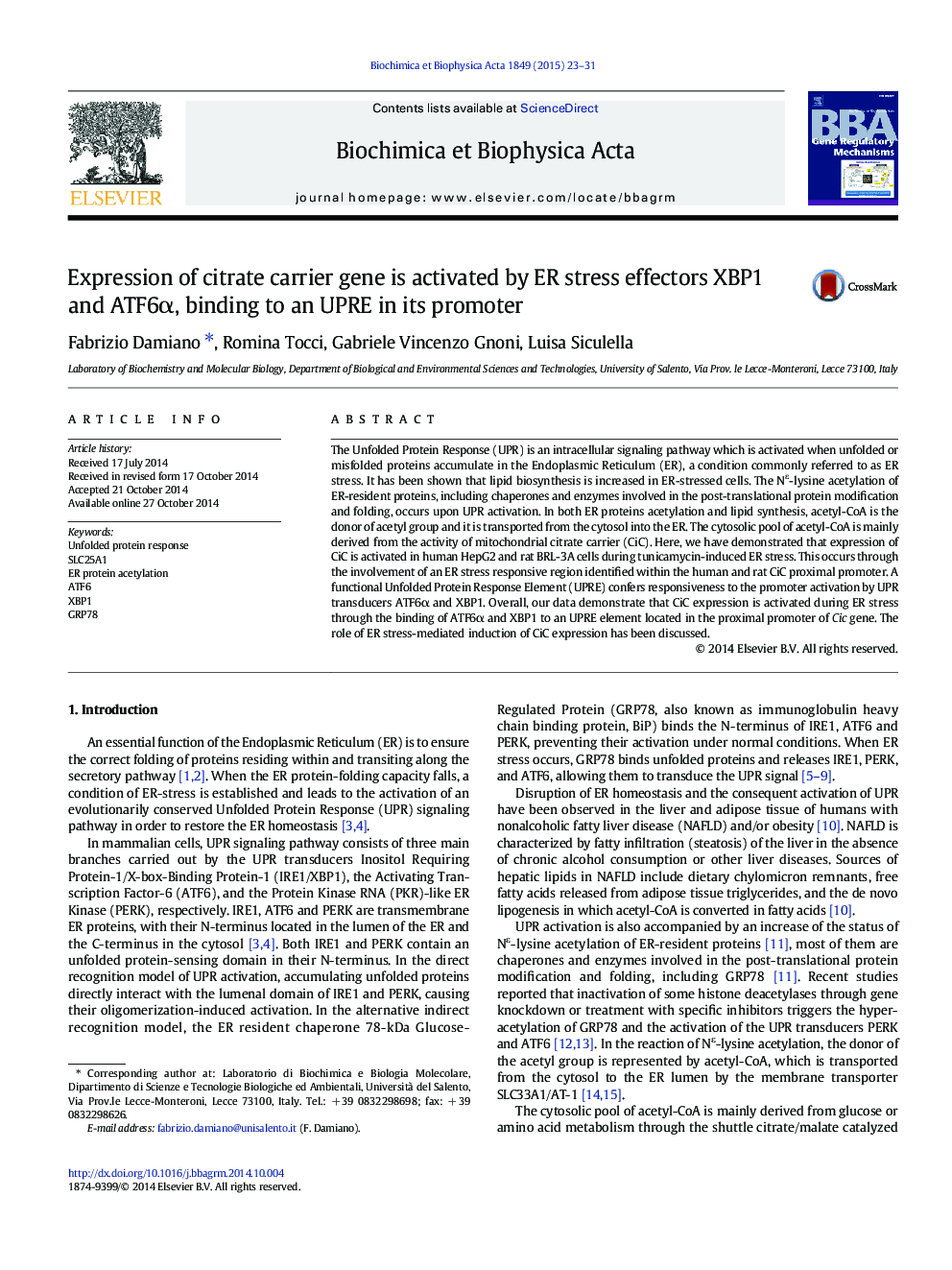| Article ID | Journal | Published Year | Pages | File Type |
|---|---|---|---|---|
| 1946365 | Biochimica et Biophysica Acta (BBA) - Gene Regulatory Mechanisms | 2015 | 9 Pages |
•Expression of CiC is activated in cells during ER stress induced by tunicamycin.•A functional Unfolded Protein Response Element has been found in CiC promoter.•ER stress activation of CiC is under the ATF6α and XBP1 branches of UPR pathway.•Increase of ER proteins acetylation upon ER stress is dependent on the CiC expression.
The Unfolded Protein Response (UPR) is an intracellular signaling pathway which is activated when unfolded or misfolded proteins accumulate in the Endoplasmic Reticulum (ER), a condition commonly referred to as ER stress. It has been shown that lipid biosynthesis is increased in ER-stressed cells. The Nε-lysine acetylation of ER-resident proteins, including chaperones and enzymes involved in the post-translational protein modification and folding, occurs upon UPR activation. In both ER proteins acetylation and lipid synthesis, acetyl-CoA is the donor of acetyl group and it is transported from the cytosol into the ER. The cytosolic pool of acetyl-CoA is mainly derived from the activity of mitochondrial citrate carrier (CiC). Here, we have demonstrated that expression of CiC is activated in human HepG2 and rat BRL-3A cells during tunicamycin-induced ER stress. This occurs through the involvement of an ER stress responsive region identified within the human and rat CiC proximal promoter. A functional Unfolded Protein Response Element (UPRE) confers responsiveness to the promoter activation by UPR transducers ATF6α and XBP1. Overall, our data demonstrate that CiC expression is activated during ER stress through the binding of ATF6α and XBP1 to an UPRE element located in the proximal promoter of Cic gene. The role of ER stress-mediated induction of CiC expression has been discussed.
